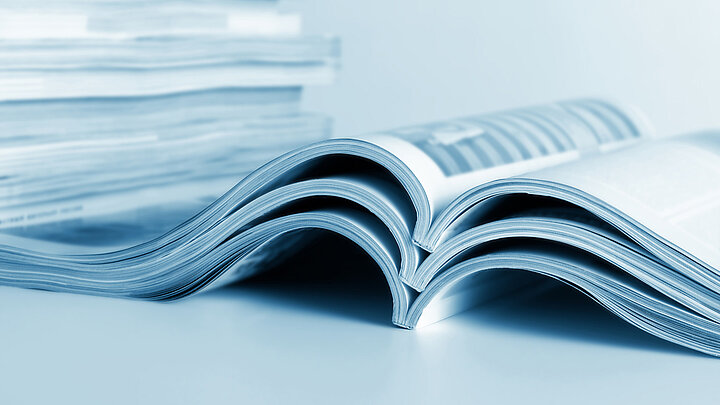
Automation, electronics elecrical engineering and space technologies
Methodology for designing hardware and software real-time vision systems, discussion and comparison of modern computing platforms: CPU, GPU, embedded GPU, FPGA, ASIC, heterogeneous solutions, classic machine learning algorithms: regression, SVM, decision trees, k-NN, k -MEANS, GMM models, PCA, naive Bayes classifier, selected image analysis algorithm and their hardware implementations: segmentation of foreground objects, optical flow, stereovision, detection of characteristic points, tracking, quality and performance evaluation methods of perception algorithms in vision, radar and lidar systems, The concept, methods and applications of multi-domain sensor data fusion, that is, data fusion from various sources,
Deep learning: networks architecture ("classic" and convolutions), learning (algorithm and methodology), example applications, the concept of reinforcement learning in planning tasks for robotic systems with a high degree of automation. The use of deep neural networks in a computer vision and in the detection of anomalies in diagnostic systems.Parameters describing static and dynamic aspects of big data sets used in the machine learning process for the environment perception in autonomous vehicles Optimization problem of neural network structures in the context of their efficient implementation in real-time systems.
The concept of explainable artificial intelligence and interpretable machine learning in the context of the design of autonomous safety critical systems. Autonomous vehicles: SAE classification, used sensors, necessary functionalities, Driver assistance systems - discussion of selected functionalities and example algorithmic solutions. Trajectory planning problem and idea of solving it for a vehicle moving in autonomous mode with a defined start and end point.
Automatic control and robotics: dynamic system, stability, stabilization methods, static and dynamic properties of open and closed control systems, parametric optimization, kinematics and dynamics of industrial robots, autonomous robot path planning. Real-time control, digital controller design, implementation of digital regulator in an industrial controller and in any kind of digital programmable device.
Basic semiconductor devices: diode, unipolar and bipolar transistor, MOS transistor, thyristor, IGBT. The principle of operation, models, characteristics. Analog circuits: single and double-transistor amplifiers. Current and voltage sources based on transistors. Amplifiers with active load. Darlington systems and cascades. Differential amplifier. Power amplifiers. Internal structure of operational amplifiers. Frequency response of amplifiers. The theory of feedback. Generators. PLL. Stability criteria. Noise. RF circuits. Digital circuits: Switching transistors. Inverter, Construction of static and dynamic gates. FPGA circuits. Multiplexers. Systems of sequential logic. Registers. Counters. Semiconductor memories. Arithmetic systems. Parasitic elements in digital circuits. Synchronization. Internal structure of the microprocessor. Modeling of the system: behavioral models, synthesized models. Hardware description languages. Simulation and design of VLSI circuits: Environment and simulation of electronic circuits, types of analyzes, methods of designing. CMOS technology, scaling. Rules for drawing a plan for integrated circuit masks. Verification of the integrated circuit mask plan, simulations including parasitic elements. Simulations including technological scattering. Design of digital blocks. Testing pf integrated circuits. Analog-to-digital and digital-to-analog conversion: converters architectures and their parameters. Voltage comparators. Control and measurement systems. Methods of designing control and measurement systems. Measurement cards and their parameters. Analysis of measurement data. Sensor technology. Types of sensors, their parameters and applications. MEMS technology. Theory of signals. Fourier series. Fourier transfom. Laplace transformation. Modulation. Sampling. Discrete Fourier transform. Z transfom. Filtration. CAD tools in the design of electronic circuits. Radio communication. Wireless techniques and systems. Microwave technology. Optical communication and fiber-optic networks. Architecture of computer systems. Operating systems - basic issues. Computer Networks
Basic laws and methods of electric circuit theory. Linear and nonlinear systems. Systems with fixed and distributed elements. Stationary and non-stationary systems. DC and AC circuits – calculations and measurements, Transients in electrical circuits, Power theories in electrical circuits. Measurements of power, energy, impedance, voltage, current. Maxwell equations, elements of field theory, Materials used in electrical engineering; properties of conductive materials, dielectrics, magnetic materials, semiconductors and superconductors, Insulation systems for electrical devices – materials, structures, diagnostic methods. Generation of electricity – conventional and unconventional energy sources, dispersed generation.Transmission, distribution and use of electricity, reduction of energy losses in electricity networks. Smart grids – concept, methods, challenges. Quality and reliability of electricity supply. Directions and problems in the development of power systems. E-mobility – problems and challenges. Basic semiconductor devices: diode, bipolar transistor, MOS transistor, thyristor, IGBT. Power electronics systems: AC / DC, DC / DC, AC / AC. Power-electronic interfaces in renewable energy sources. Machines and electric drives: DC, AC. Building automation.
Information and communication technology
- Theory of information, data coding.
- Basics of computational methods: computer arithmetic, interpolation, approximation, numerical integration, systems of linear equations, solving differential equations.
- Operating systems: kernel, process, thread, shell. Techniques of building operating systems.
- Analog and digital signals, signal spectrum, sampling, Fourier Transform
- Modulation techniques.
- ISO/OSI model of telecommunications networks.
- Transmission media and their characteristics.
- IPv4 and IPv6 networks.
- MAC and routing protocols.
- Traffic engineering in TCP and MPLS networks.
- Wireless networks: cellular and WLAN.
- Multimedia: compression and transmission of sound and image.
- Quality of Service in telecommunications networks.
- Computer networks security.
- Basic research methods: calculations, experiment, computer simulations
- Computational methods, interpolation, extrapolation, numerical methods, linear regression, least-squares method, Monte Carlo methods.
- Optimization methods, function minimization, dynamic and linear programming.
- The life cycle of the IT system. Models for the production of information systems: cascade, incremental, spiral, light methodologies.
- Databases and their types. Relational model of databases. Modern approaches to creating databases.
- Architecture of computers, CPU, GPU, SIMD, MIMD, supercomputers.
- Distributed systems: types, methods of construction, most popular technologies.
- Current IT challenges: Internet of Things, big data, quantum computing, large scale systems and calculations.